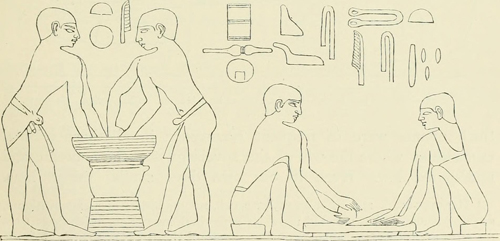
Your complimentary articles
You’ve read two of your four complimentary articles for this month.
You can read four articles free per month. To have complete access to the thousands of philosophy articles on this site, please
Creativity
The Philosophy of Creativity
Rick Lewis asks Elliot Paul and Christine Battersby what’s new in this fascinating field.
How can you be more creative? What is the connection between creativity and inspiration? Where do inspirations come from? The novelist Terry Pratchett, who knew a thing or two about imagination, had an amusing theory about this, as follows: “Little particles of inspiration sleet through the universe all the time travelling through the densest matter in the same way that a neutrino passes through a candyfloss haystack, and most of them miss.”
In a more earnest vein, Robert Pirsig wrote in Zen and the Art of Motorcycle Maintenance (1974) about the relationship between the mechanic’s mind, hand and eye, as one of constantly assessing a problem and making the changes that seems to be called for, and then reassessing and making further changes, in a continually unfolding creative process. This process, Pirsig claimed, was what united motorcycle mechanics with sculptors and other artists.
What have contemporary philosophers written about the nature of creativity? What’s the state of the debate? It has been quieter than you might suppose, but recently there have been signs of life. In 2010 Professor Berys Gaut of the University of St Andrews wrote a wide-ranging paper called ‘The Philosophy of Creativity’ in the journal Philosophy Compass. It included a survey of issues such as those above, and others such as whether the creative process is rational, whether creativity is a virtue, and the relation of creativity to knowledge. Gaut argued that philosophers in this area should pay more attention to what psychologists have been up to. He writes: “In 1950 J.P. Guilford gave a highly influential Presidential address to the American Psychological Association in which he pointed out how little work had been done on the topic [of creativity] by psychologists.” Since then, Gaut went on, there has been constant activity, laboratory investigations, dedicated journals and textbooks, and, most important of all, competing psychological theories of creativity. Gaut said that philosophers had so far paid little attention to this work, apart from some discussion of two theories known as the computational theory and the cognitive psychological approach.
Then in 2014, The Philosophy of Creativity was published with chapters by a whole range of thinkers, including Gaut. This illustrated an increasing interest in creativity among philosophers. It was edited by Elliot Samuel Paul and Scott Barry Kaufman, and in 2017 Les Reid reviewed it for Philosophy Now Issue 120.
However, earlier than this, a notable philosophical contribution to understanding creativity had already been made by the well-known feminist philosopher Professor Christine Battersby in her 1989 book Gender and Genius: Towards a Feminist Aesthetics.
I recently asked first Elliot Paul and then Christine Battersby a couple of questions about the topic. Their answers follow:

Elliot Samuel Paul is Assistant Professor of Philosophy at Queen’s University, Ontario. He is co-editor of The Philosophy of Creativity (Oxford Univ Press, 2014) and co-author of the extensive entry on Creativity for the Stanford Encyclopedia of Philosophy.
PN: So, what is creativity?
EP: The standard definition of creativity focuses on its products – an idea, performance, or artefact – and says a product counts as creative if it is new and valuable. Novelty is not enough, because something could be new but worthless, in which case it doesn’t deserve to be praised as creative.
Going beyond the standard definition, however, the essence of creativity isn’t just about valuable new products; it’s also about the kind of process that generates them. For one thing, the creative process needs to be performed by an agent, by a being who is responsible for what they are doing. A water droplet freezing around a particle produces a unique snowflake, something new and aesthetically valuable. But the water droplet isn’t creative. That’s because it isn’t an agent. Real creativity is an expression of agency.
Nowadays AI systems are generating impressive new artworks but we hesitate to call them creative. That’s because it isn’t clear that these systems are creative.
PN: Where does inspiration come from?
EP: One of the fascinating things about creative insight is the way it takes the creator by surprise. Creators from all domains, from the arts to the sciences, commonly report that they weren’t even focused on the relevant problem (they were taking a walk, daydreaming, or working on something else) when all of a sudden – Eureka! – the solution strikes them. Where did it come from?
According to an old myth going back to the Ancient Greeks, such epiphanies occur when a person is inspired – literally filled with the spirit of a god or muse. The divine being is the real creator; she uses the person as a vessel to communicate her ideas. This story is alluring because it coheres with the phenomenology of insight, the way an insight feels like it didn’t come from you and it is mysterious to you how it arose.
But instead of invoking divine inspiration, researchers today explain the surprising character of creative insight by appealing to the operation of the unconscious mind.
You can’t create anything significant without conscious preparation. In the long term, you have to exert a lot of conscious effort to learn the skills, concepts, and other elements of your domain. In the shorter term, you may deliberately focus on a particular problem or task in that domain, and any ideas that occur to you would emerge, not ex nihilo, but through a process of recombining and altering elements that you’ve acquired through experience. When you turn your attention away to something else, your unconscious mind may continue manipulating stored ideas, such that if it later generates a solution which surfaces to your awareness, you won’t have seen it coming and it may seem as if it came from something or someone else.
The challenge for researchers is to figure out what cognitive mechanisms come into play at each stage of the creative process and what factors help or hinder their operation. These are largely empirical issues, so my collaborators and I inform our philosophical study of creativity with findings from psychology, neuroscience, and other cognitive sciences.

Christine Battersby is Reader Emerita in Philosophy, and an Associate Fellow of the Centre for Research in Philosophy, Literature and the Arts at the University of Warwick. Her Gender and Genius: Towards a Feminist Aesthetics was first published in 1989 and republished in 2022 in the Bloomsbury Philosophy Library: Contemporary Aesthetics Collection. Her article on ‘Schopenhauer’s Metaphysics and Ethics: Mapping Influences and Congruities with Feminist Philosophers’ is included in The Palgrave Handbook of German Idealism and Feminist Philosophy, eds Susanne Lettow and Tuija Pulkkinen, 2022.
PN: What is the connection between creativity and genius?
CB: Classical and neoclassical connoisseurs of art did not place great emphasis on originality. For them, the function of the best artists or writers was to mirror the underlying truths or universal Ideas that lie concealed behind appearances. Talent, judgment and performative skills mattered more than self-expression. It was during the eighteenth century that ‘aesthetics’ emerged as a distinct branch of philosophy, and this was also the time when creativity, originality and genius emerged as key concepts. The so-called ‘genius’ was ascribed a power of creation analogous to that of a monotheistic, Judaeo-Christian, God, capable of bringing a brand-new world, and even His own self, into existence through the power of utterance. It was claimed that the uniqueness of the genius’s “I am” is reflected in every facet of his artwork – and indeed throughout his whole oeuvre. According to the Romantics, a great work of art ‘grew’ or ‘burst forth’: it was not a product of calm forethought, mere talent or rational design, but of an overflow of burgeoning psychic energies that operated below the level of conscious thought. This Romantic model of creativity continued to have resonance into the twentieth century and beyond.
The creative energies of the ‘genius’ were ascribed to sublimated male sexual energies, and linked to a highly individualised male self. Women were commonly said to lack the individuality necessary for true creativity, and also refused the ability to transcend or to sublimate their bodily instincts and reproductive capacities in the same ways as the exceptional male ‘geniuses’. Creative women credited with similar psychic powers were said to be not fully female. By the end of the nineteenth century, it had become a cliché to assert with Cesare Lombroso in The Man of Genius (1891): “there are no women of genius; the women of genius are men.”

Creativity in ancient Egypt: a potter’s workshop
From A History of Art in Ancient Egypt (1883)
PN: How does feminist aesthetics offer a new perspective on creativity?
CB: Looking at the ways in which Western and Northern cultures have over-valued an individualised mode of psychic creativity, and under-valued the procreativity of female bodies, can provide us with resources for imagining creativity differently. Women in our culture are, on the one hand, taught to think of themselves as not different from men. But the female subject-position is also, historically, more irredeemably bodily, and less psychically isolated than that of a typical male – bound, through relationships of love, care, childbearing and childrearing, within interpersonal relationships, to materiality and also to other embodied selves. Focusing on natality, as well as on social and material entanglements, can help us re-imagine creativity in a much more cooperative and dynamically interactive way.








